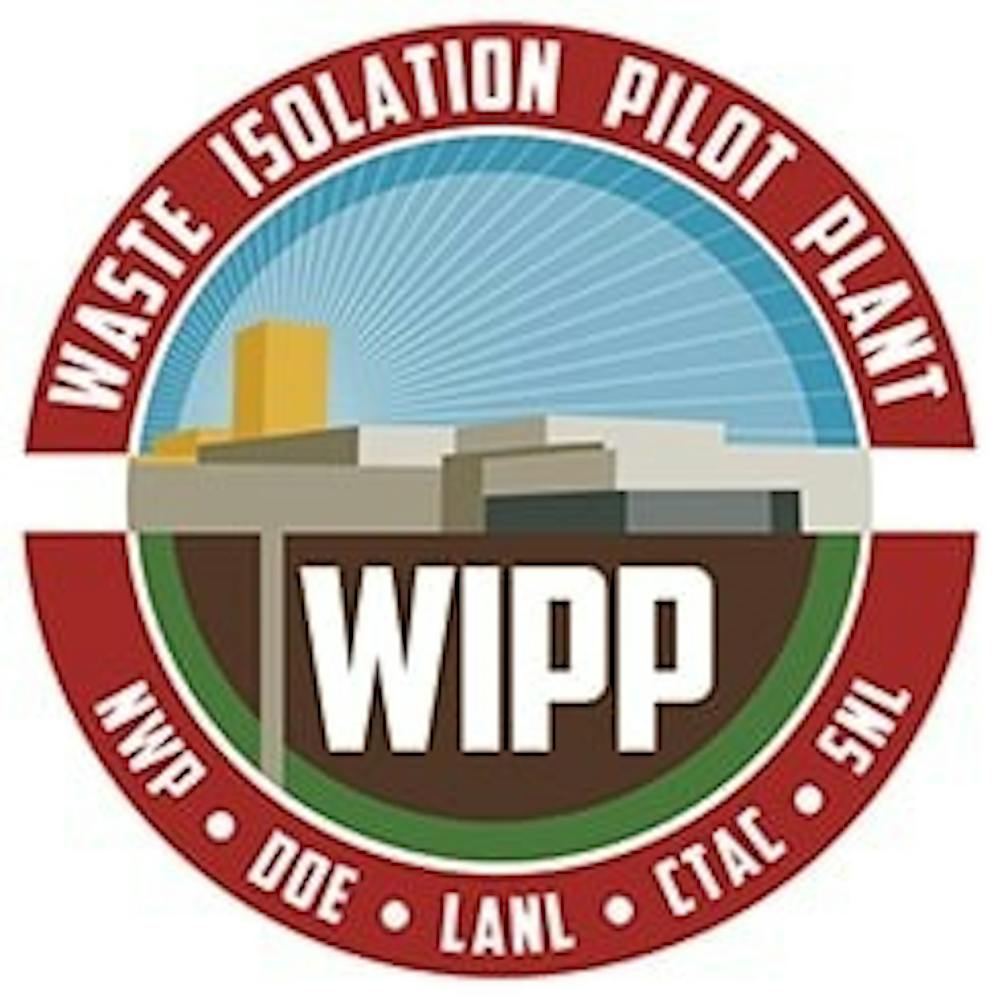Many New Mexicans remain wary of nuclear contamination at the Waste Isolation Pilot Plant in Carlsbad, New Mexico, and on March 1, concerned citizens gathered outside the Statehouse to protest the Department of Energy’s announcement of their goal to send 30 large nuclear waste shipments to WIPP throughout 2022.
Cynthia Weehler, co-chair of Santa Fe-based activist group 285 All and leader of the March 1 petition rally through the Nuclear Waste Partnership, continues to advocate for the greater New Mexican public by opposing the Department of Energy and WIPP in their plans for quiet expansion.
“The federal government is expanding WIPP but doing it very quietly. They will not speak to the public, and yet it’s the public that will be put at risk,” Weehler said. “They are just kind of trying to put this together piecemeal so that people will not know what’s happening.”
The petition garnered over 1,100 signatories, according to Don Hancock, Nuclear Waste Safety program director and an administrator at Southwest Research and Information Center. He assisted Weehler in planning the petition.
“This sort of new expanded mission for WIPP is causing new public concern,” Hancock said. “We got over 1,100 petitions.”
Since learning about WIPP, Weehler has been shocked by the lack of press surrounding it.
“When I found out about it, and of course what we know about it comes from the federal register and an account written by the national academies of sciences, I thought to myself, ‘Wow, am I the last one to hear this?’ So I started asking my neighbors and they didn’t know, in fact, they didn’t believe it … I asked my state rep and state senator, they didn’t know,” Weehler said. “There’s just something really wrong here.”
WIPP is the only underground radioactive waste repository in the U.S. sustained geologically in an old salt repository and has been accumulating defense-generated transuranic (TRU) waste since 1999, one year after being certified as safe by the U.S. Environmental Protection Agency for the disposal of TRU waste, according to the Nuclear Waste Partnership LLC.
Located in a thick bed of salt nearly half a mile below the surface of the earth, the TRU waste disposal site has been sanctioned because the salt deposits are naturally suited to seal any fractures and effectively close off the TRU waste and its distance from flowing fresh water sources, according to WIPP’s website.
The Southwest Research and Information Center’s Nuclear Waste Program is an initiative to ensure that radioactive materials disposed of at various sites belonging to the Department of Energy, including the WIPP, are monitored for compliance with federal regulations.
Hancock’s involvement in the monitoring of WIPP began 47 years ago when WIPP was only a proposal. Hancock has always been wary of the repository. Since the 2014 airborne radioactive leak, he has become even more attentive.
Get content from The Daily Lobo delivered to your inbox
“There are and have always been issues about how safe WIPP is,” Hancock said. “There are both federal and state laws and state agreements and permits that limit WIPP and DOE … WIPP argues that, ‘We haven’t violated those agreements yet,’ but they have very clear plans to violate them.”
Weehler’s safety concerns relate to the transportation of waste to and from labs and between diffusion and dilution sites, as well as the communities along the disposal route which may be affected by radioactive leakage.
“We think it’s a very unsafe situation to try to move all this material so many times back and forth across the country,” Weehler said. “In our state alone, that (route) includes not only people that are in communities around Santa Fe but four pueblos … and the farmers and ranchers along Interstate 40.”
Hancock is also concerned with this route and stated that the purpose of the pilot plant is to serve as a sort of trial plant, the first of many. WIPP has yet to turn out another plant, though, despite the fact that more would better serve the nation and decrease the lengths by which waste would travel.
“A pilot plant is supposed to be the first of several, but there are no others. While there are laws and agreements that say that WIPP is limited, for the purpose that there will be other repositories … When you’ve only got one repository, everything that needs to go to a repository is going to go there, whether or not it’s supposed to,” Hancock said. “(There’s) a lot more waste than it is supposed to take, than it was designed to take.”
Hancock urges the greater public to reach out to local representatives for support, to take action and ask Gov. Michelle Lujan Grisham to assist in the reassessment of the WIPP agenda.
“It’s time for New Mexico to … say we’re going to limit WIPP and we’re going to ensure that we can do everything we can to make sure there are other repositories,” Hancock said. “We have almost 100,000 cubic feet of waste stored underground … New Mexico has done their share.”
Natalie Jude is the culture editor at the Daily Lobo. She can be contacted at culture@dailylobo.com or on Twitter @natalaroni






